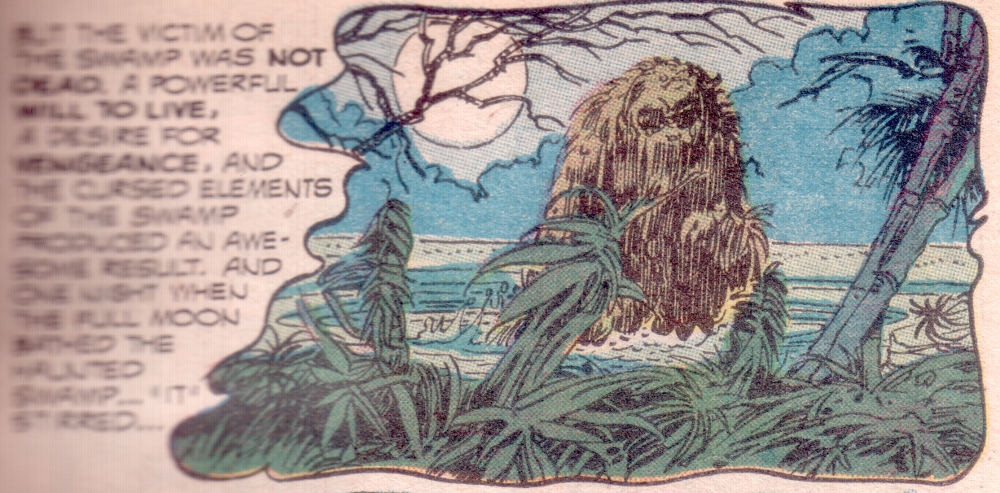 The Lurker is subtle twist on the now-standard Muck Man short story, in this case written by Don Glut and illustrated by artist Jesse Santos (nether of whom are credited in the digest itself). Bank Robber Martin Kraz returns home after a ten year stint, only to find that his buried loot is guarded by the swamp monster. Like the early Hillman Heap, the Lurker feels the need to feed, and it first sighted carrying off sides of beef from the local butcher shop. And like all swamp monsters, the Lurker has a powerful will to live that keeps the dead individual mobile. But Glut changed the formula, both for this as well as the Lurker’s later appearance in Doctor Spektor. For one, Martin Kraz is not a likeable character. And like Joe Timms from Like Roy Thomas's initial Glob, he’s a small-time criminal. Although Kraz has just been released from prison, rather than being an escapee. He discovers that the Lurker is the remains of his original partner, who helped him bury the loot. However, Kraz discovers that a gun does work on the swamp monster. But the curse of Haunted Swamp overcomes Kraz, and he becomes a mucky Lurker, even as the previous one dies.
The Lurker is subtle twist on the now-standard Muck Man short story, in this case written by Don Glut and illustrated by artist Jesse Santos (nether of whom are credited in the digest itself). Bank Robber Martin Kraz returns home after a ten year stint, only to find that his buried loot is guarded by the swamp monster. Like the early Hillman Heap, the Lurker feels the need to feed, and it first sighted carrying off sides of beef from the local butcher shop. And like all swamp monsters, the Lurker has a powerful will to live that keeps the dead individual mobile. But Glut changed the formula, both for this as well as the Lurker’s later appearance in Doctor Spektor. For one, Martin Kraz is not a likeable character. And like Joe Timms from Like Roy Thomas's initial Glob, he’s a small-time criminal. Although Kraz has just been released from prison, rather than being an escapee. He discovers that the Lurker is the remains of his original partner, who helped him bury the loot. However, Kraz discovers that a gun does work on the swamp monster. But the curse of Haunted Swamp overcomes Kraz, and he becomes a mucky Lurker, even as the previous one dies. 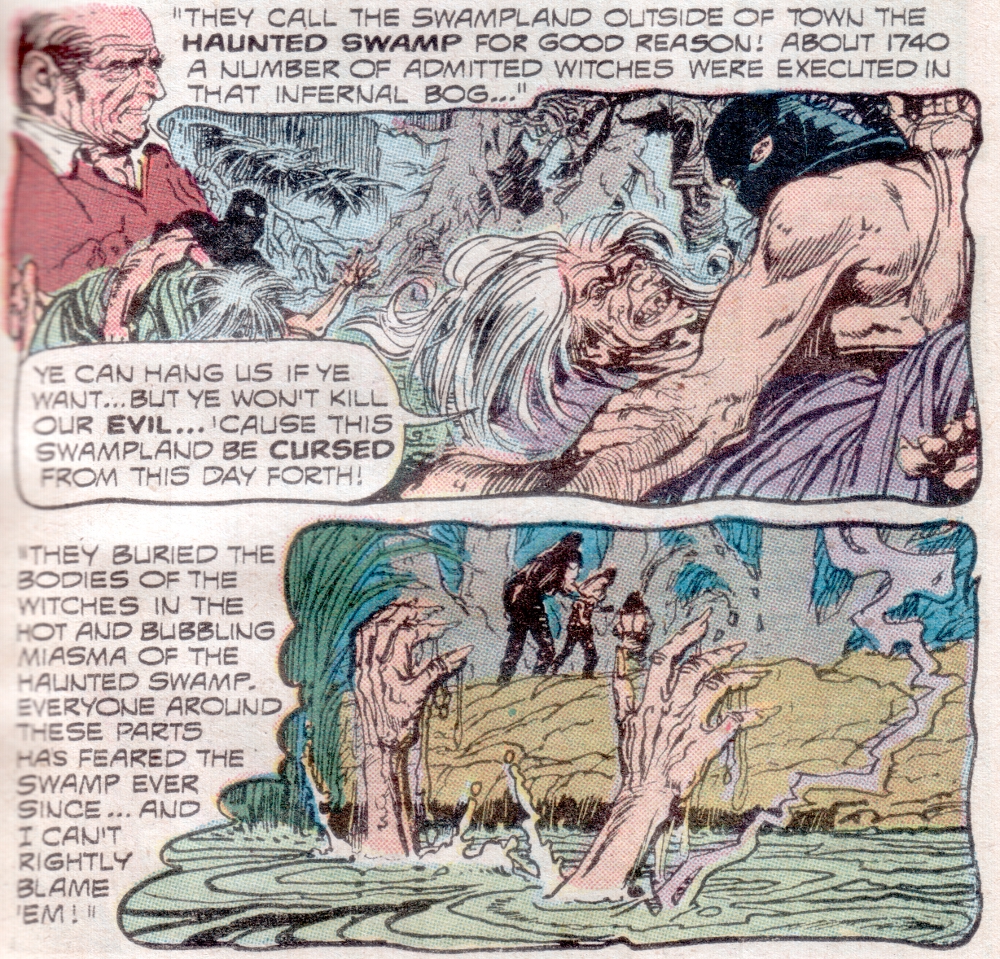 That said, there are several key differences that make the story stand out. One, the Lurker in the Swamp is not immune to bullets. So while the usual revenge (this time between two robbers) serves as the (apparent) climax of the story, Glut’s twist is that the Lurker dies, and the man who murdered it becomes the new Lurker. This idea of of the serial identity, that the swamp monster is not unique but an identity to be assumed, would not be picked up again until Alan Moore’s stint on Swamp Thing. Another twist on the tale is that the catalyst that changes the human into the Lurker is not pseudo-science, but supernatural. Haunted Swamp was where the local constabulary dumped the bodies of witches.
That said, there are several key differences that make the story stand out. One, the Lurker in the Swamp is not immune to bullets. So while the usual revenge (this time between two robbers) serves as the (apparent) climax of the story, Glut’s twist is that the Lurker dies, and the man who murdered it becomes the new Lurker. This idea of of the serial identity, that the swamp monster is not unique but an identity to be assumed, would not be picked up again until Alan Moore’s stint on Swamp Thing. Another twist on the tale is that the catalyst that changes the human into the Lurker is not pseudo-science, but supernatural. Haunted Swamp was where the local constabulary dumped the bodies of witches.Four years later, in 1976, Glut revisited his muck monster in his ongoing series The Occult Files of Doctor Spektor. The good doctor is an occult detective, created by Don Glut as a one-off for Gold Key's Boris Karloff's Tales of Mystery #5 (July, 1972). By April of 1973, Spektor had his own series, The Occult Files of Doktor Spektor, which reached twenty-four issues between 1973 and 1977, and a 2014 miniseries Doctor Spektor, Master of the Occult. Don Glut took several creatures from his time writing digest shorts into Dr. Spektor's ongoing series. And with issue 21 the Lurker and Doctor Spektor crossed paths.
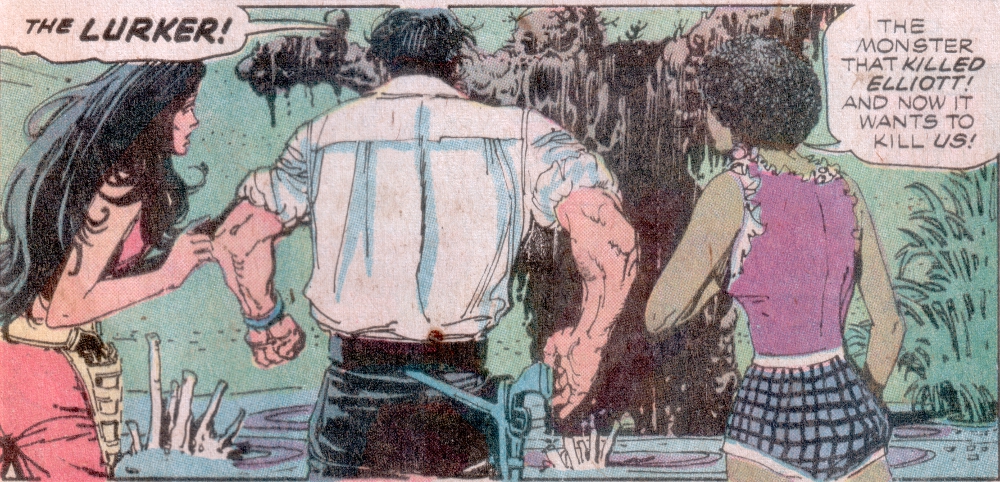
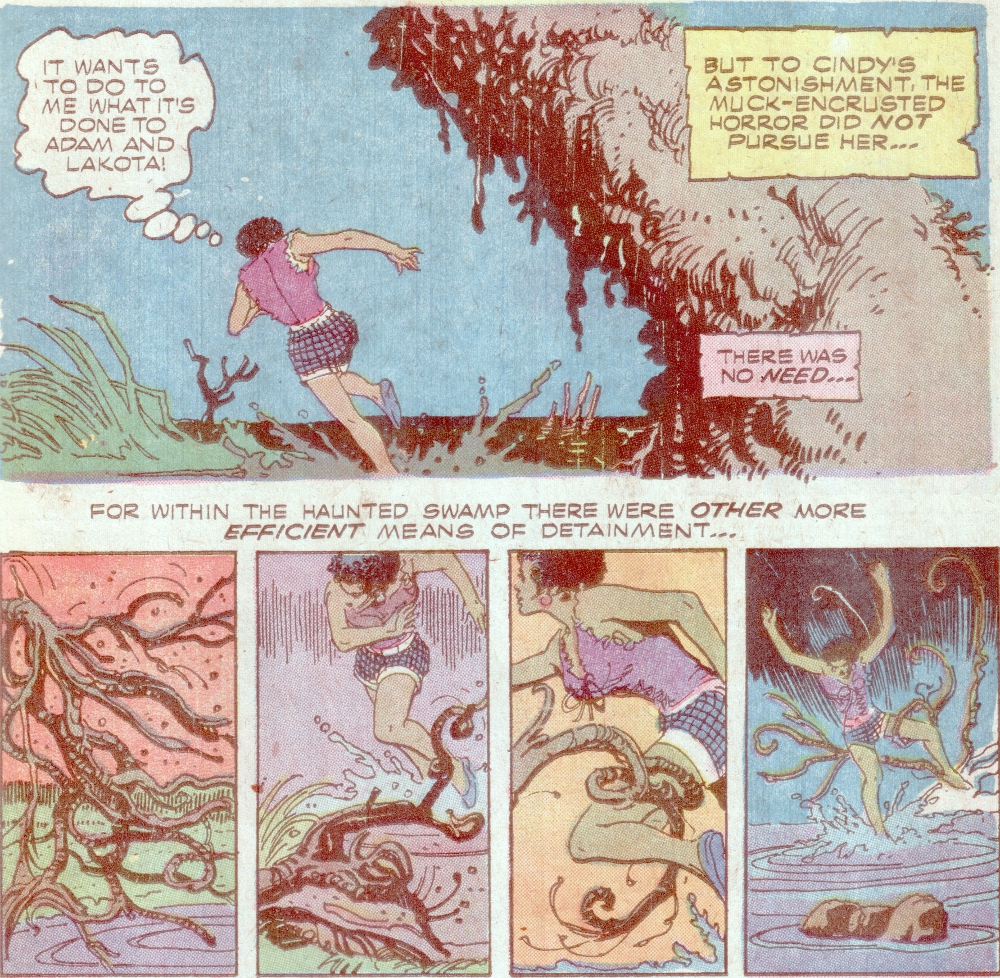 One of Glut's strengths is his in-depth knowledge of the genre, so he can anticipate where the reader believes the story is going. So the story is not a simple monster hunt, it has a good twist in the end. The Lurker has also changed a bit in the four years between its appearances. The Lurker Dr. Spektor encountered doesn't appear to be animated by the spirit of the criminal Martin Kraz. It is now immune to bullets, where the initial appearance was not. It also showed a new power, a command over plants. This once showed up in the Heap comic, and Glut says he had read several Heap comics, although it's difficult to say which ones exactly. Control over plants was a rare power among the Muck Monsters, or was until Alan Moore took the ability to the terrifying extreme with Swamp Thing. Post Moore, many swamp creatures would be able to control plants.
One of Glut's strengths is his in-depth knowledge of the genre, so he can anticipate where the reader believes the story is going. So the story is not a simple monster hunt, it has a good twist in the end. The Lurker has also changed a bit in the four years between its appearances. The Lurker Dr. Spektor encountered doesn't appear to be animated by the spirit of the criminal Martin Kraz. It is now immune to bullets, where the initial appearance was not. It also showed a new power, a command over plants. This once showed up in the Heap comic, and Glut says he had read several Heap comics, although it's difficult to say which ones exactly. Control over plants was a rare power among the Muck Monsters, or was until Alan Moore took the ability to the terrifying extreme with Swamp Thing. Post Moore, many swamp creatures would be able to control plants.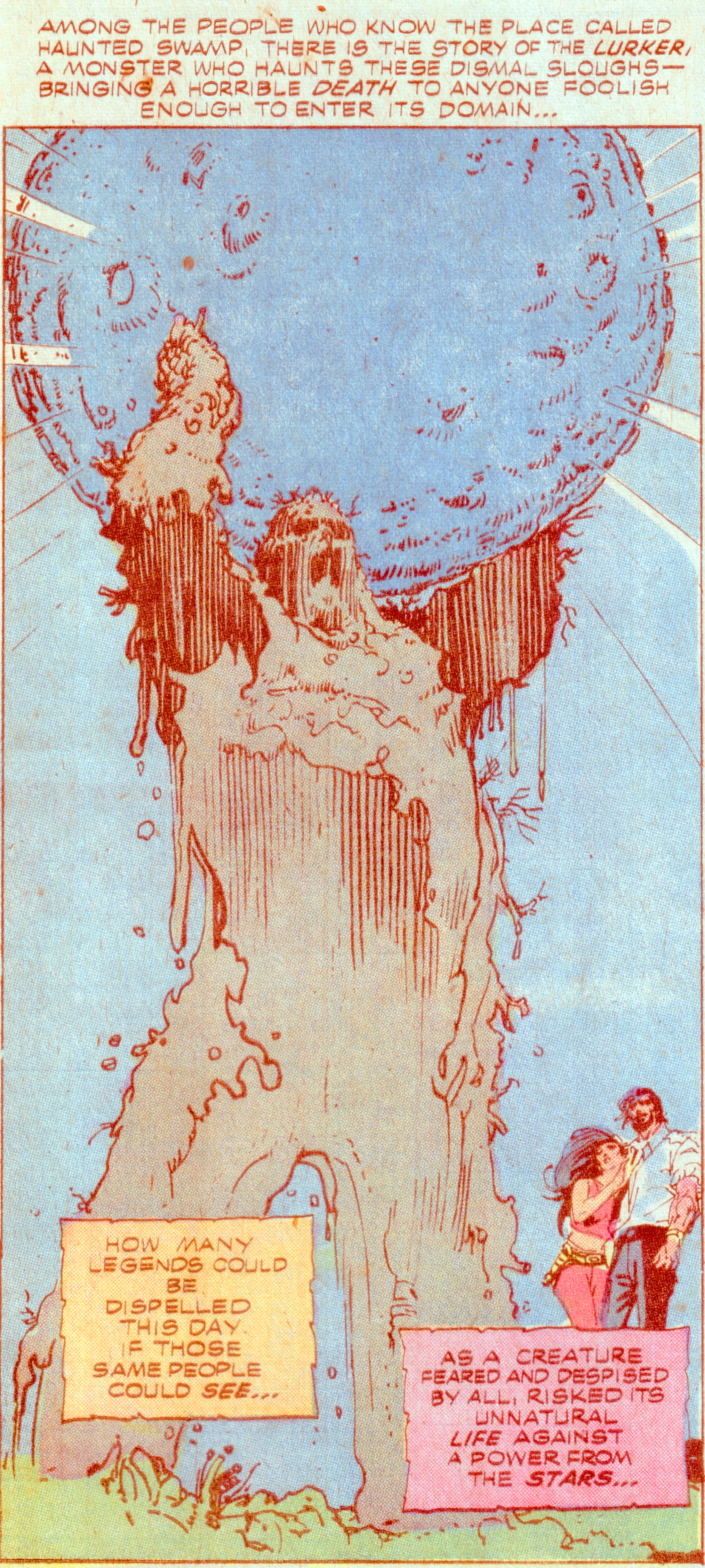
Part of the change is the gentling the soul of the monster. Initially Spektor believes the Lurker is responsible for disappearances in the Haunted Swamp. And it seems like a good bet that it was. The Lurker, however, turns out to be benevolent, almost a guardian of the swamp, protecting the people of the swamp from a greater menace. And like Roy Thomas's initial Glob story, it sacrifices itself by walking into the quicksand.
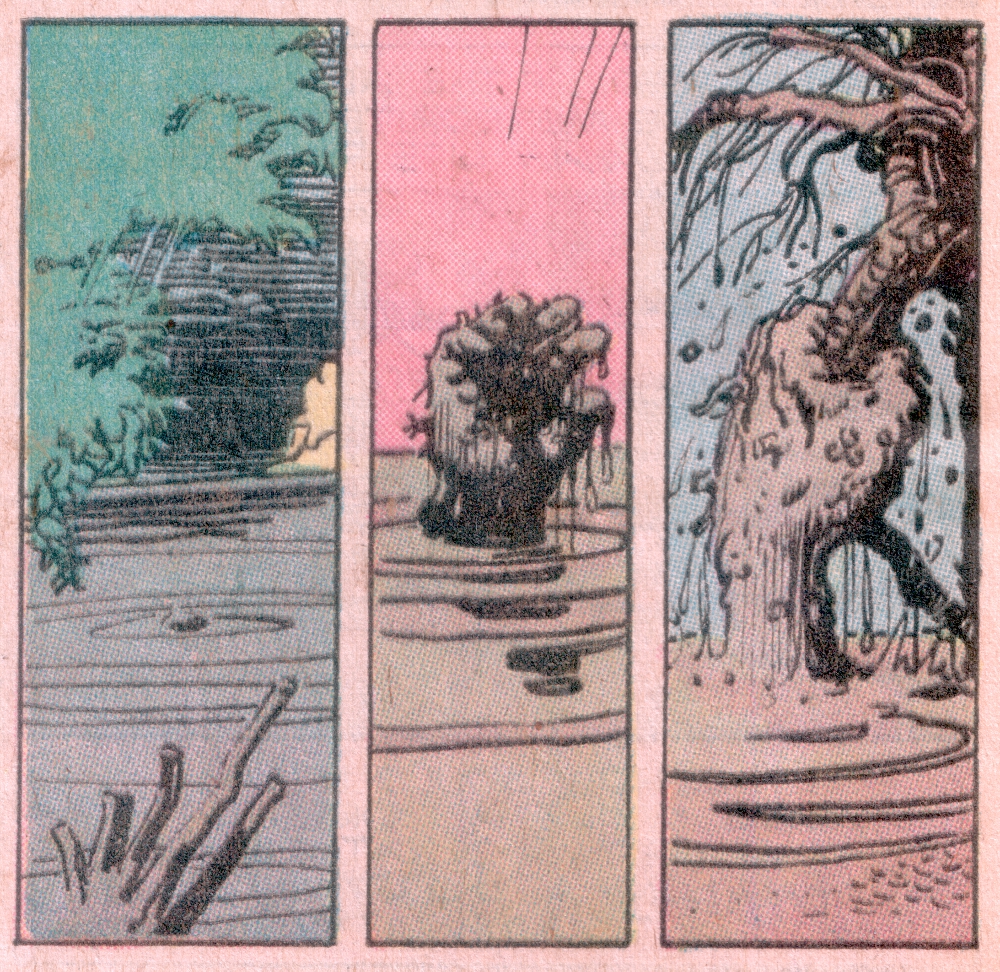 It's a good and surprisingly complex story. And Glut was savvy enough to show the mucky hand of the Lurker rising from the depths. Obviously, there's life in the old monster yet.
It's a good and surprisingly complex story. And Glut was savvy enough to show the mucky hand of the Lurker rising from the depths. Obviously, there's life in the old monster yet.Unfortunately, this was the last chance he got to write the Lurker, and in his interview for Swamp Men, Glut demonstrates a bit of disappointment that he never got to write a third Lurker story. To him, as to me, there is something unique and poignant about these mucky anti-heroes, something that allows us to write many stories on their oddly unfinished and inhuman features. And in Glut's two stories are the seeds of muck men attributes that will be picked up by later writers. I can only wonder what he could have done if he had continued with the character.
No comments:
Post a Comment